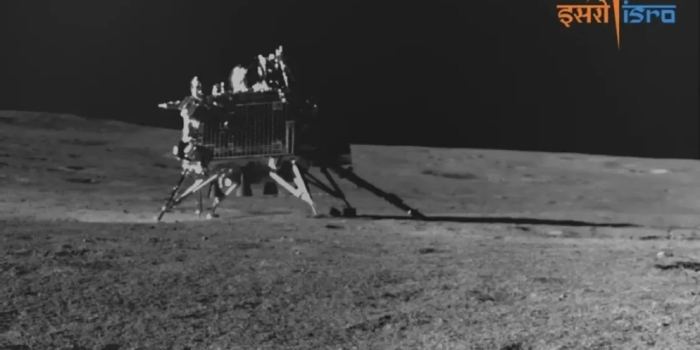In a significant development, India made history with its Chandrayaan-3 mission, becoming the fourth nation to achieve a successful lunar landing. One remarkable element carried by the Vikram lander, courtesy of NASA, is the Laser Retroreflector Array (LRA). Recently, NASA reported the successful “pinging” of this reflector from orbit by its Lunar Reconnaissance Orbiter (LRO), further enhancing the mission’s scientific value.
Chandrayaan-3, making its lunar debut alongside Russia’s Luna-25 mission, marked a historic moment with the successful landing of the Vikram lander and Pragyan rover in the Moon’s southern polar region. Notably, this region is of particular interest to NASA for its planned Artemis III mission in 2026.
The Laser Retroreflector Array (LRA) aboard Vikram is a compact device, roughly the size of an Oreo cookie, housing eight circular quartz-corner-cube prism reflectors. These small reflectors point in a different direction, covering a reflective field of about 20 degrees. This unique design allows the LRA to effectively bounce back any incident light, showcasing its precision in reflecting light.

While the Vikram lander is now offline, the LRO, on a pass over Vikram’s location on December 12, 2023, successfully utilized its laser altimeter to ping the LRA from an altitude of 62 miles. This accomplishment validates the functionality of the LRA, demonstrating its ability to respond to laser pulses even after the lander’s inactivity.
NASA envisions the LRA technology as a crucial component for future lunar operations. These reflectors, requiring no power or maintenance, are reliable for locating surface assets for decades after deployment. Although current lunar exploration lacks widespread deployment of laser reflectors, NASA sees the potential for further testing and integration in upcoming lunar missions.
The Lunar Reconnaissance Orbiter, equipped with the LOLA altimeter primarily used for mapping the Moon’s surface, serves as the sole lunar orbiter with laser capabilities. Despite not being designed for this specific purpose, LRO’s success in pinging the LRA opens doors for future advancements in lunar technology. NASA plans to continue using the LRO to test these reflectors until new instruments with more precise lasers become available in upcoming lunar missions.


